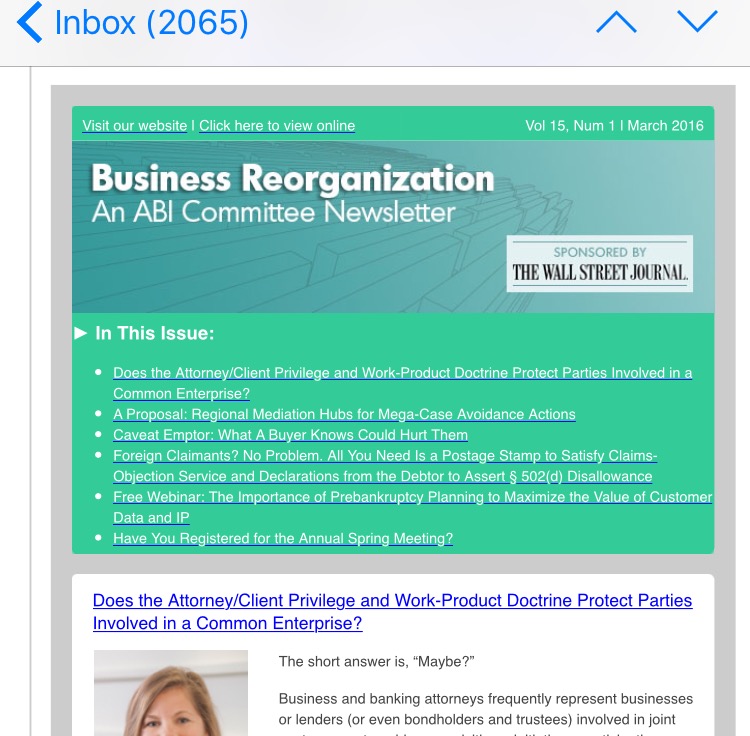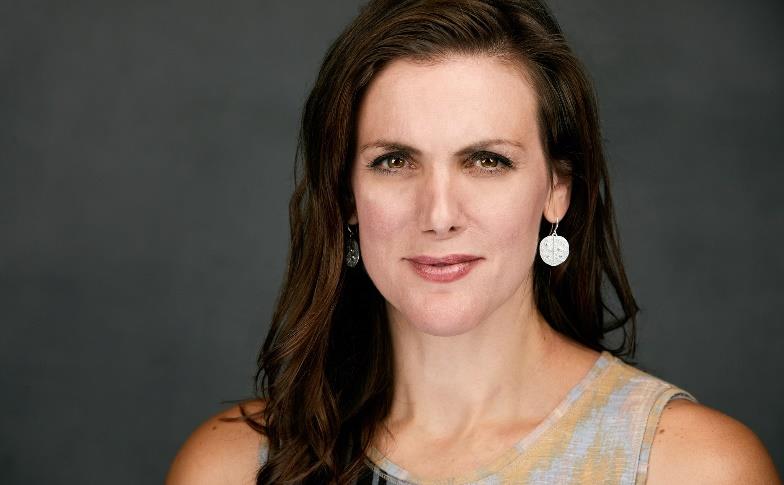Chapter 11 Debtor Toys “R” Us Creditors’ Case Approaches Tipping Point as It Moves to Trial
written by : Mazurkraemer Law Clerk Andrew Del Zotto- Villanova School of Law, Class of 2023 
Toys “R” Us Creditors march toward trial in their adversary proceeding against former officers and managers The case will shed light on significant issues that arise given desperate attempts of distressed businesses as they slide into bankruptcy.

In 2020, The Trust filed an adversary proceeding against the Debtors’ former officers and managers (“Defendants”) asserting a breach of fiduciary duties by:
- Obtaining Debtor-in-Possession (DIP) financing at the start of the bankruptcy proceeding;
- Authorizing retention payments to 114 company executives before the commencement of the bankruptcy proceeding; and
- Authorizing the payment of $18 million of advisory fees to the Debtors’ private equity shareholders from the fourth quarter of 2014 through the first quarter of 2017.
The Trust further alleges that in an attempt to persuade its vendors to continue shipping goods and providing services to TRU on credit after the bankruptcy, Defendants misrepresented facts concerning the retailer’s ability to make payments. The Trust claims the total amount due to vendors totals more than $600 million. See TRU Creditor Litigation Trust v. Raether, et al, 20-03038, U.S. Bankruptcy Court for the Eastern District of Virginia (Richmond).
On June 28, 2022, Virginia U.S. Bankruptcy Judge Keith Phillips made a decision that for all but one issue (breach of fiduciary duty for DIP financing – summary judgment granted), the parties are going to jury trial.
Where Will the Case Go from Here? Several legal questions are poised to be decided at trial. At the heart of the issue is a claim of breach of the former Toys “R” Us executives’ fiduciary duties. So, did the executives fulfill breach their duties when dishing out bonuses? While the answer to that question is unknown, the trial will almost assuredly address the actions of key Toys “R” Us executives at the time when bankruptcy was, at least according to the creditors, imminent. During this time, bonuses were paid to 114 Toys “R” Us executives and managers, the largest totaling $2.8 million to former CEO David Brandon.Brandon, in the failed request for summary judgement, noted: “So long as a company is not insolvent, its Board members owe a fiduciary duty to the company and its owners, and can take actions that benefit the owners to the detriment of the company.” This comment raises another key question to be answered at trial: was Toys “R” Us already insolvent when it paid nearly $18 million to its private-equity backers – Bain Capital, KKR & Co., and Vornado Realty Trust – in the years immediately leading up to its bankruptcy declaration? The Trust argues that “TRU had been insolvent since at least 2014” and “the officers and directors of TRU each had a fiduciary duty to protect the value of TRU for TRU’s creditors, and not merely to focus on advancing the interests of the majority equity holders-Bain, KKR, and Vornado.” Since Judge Phillips made it clear that solvency is a question of fact, this question will need to be answered by the jury at trial.
The final major legal issue looming stems from the creditors’ allegation that Toys “R” Us spent about $600 million on goods and services while well-aware of the company’s dire financial health. The relevant legal question is whether Toys “R” Us brass adequately disclosed to vendors that the company’s finances were in such poor shape that store closures and large-scale shutdowns were coming. Surely, at the very least, creditors’ will be pursuing damages to recoup the losses from Toys “R” Us’ unpaid bills. Sources: TRU Creditor Litigation Trust v. Raether, et al, 20-03038, U.S. Bankruptcy Court for the Eastern District of Virginia (Richmond).
“Former Toys ‘R’ Us Executives Face Trial Over Botched Bankruptcy,” Jeremy Hill and Eliza Ronalds-Hannon, June 28, 2022. https://www.bloomberg.com/news/articles/2022-06-28/former-toys-r-us-execs-to-stand-trial-over-botched-bankruptcy
“Toys R Us creditors’ lawsuit proceeds,” Richard Collings, June 29, 2022. https://www.axios.com/pro/retail-deals/2022/06/29/toys-r-us-creditors-lawsuit-proceedsA 12-Point “Organizational Survival” Checklist for Upper Management
by Salene Mazur Kraemer, Esquire, MBA, Certified Turnaround Analyst, Board-Certified Business Bankruptcy Law Specialist

image source: https://www.cio.com/article/2439314/change-management-change-management-definition-and-solutions.html
“The only thing that is constant is change”- Heraclitus
To pivot is to rotate, swivel, revolve, spin. Change course. Can your company change course in response to setbacks and an ever-changing business landscape?
Look at retail. With the surge of online shopping, the rise of Amazon, and declining mall traffic, the retail industry has been decimated. Social media addicted teens no longer hang out at malls for social connection. A viral Instagram picture of a celebrity sporting a designer’s hat can spawn a new trend, not a retail storefront. Indeed, the Internet, IPhone apps and social media have forever changed the American retail experience. Some beleaguered retailers should have changed their business models to escape the fate of liquidation. But how?
As a business and bankruptcy attorney and turnaround consultant, I have long been a student of consumer trends and industry movements, and I regularly subject a client’s business model to rigorous examination. Filing a chapter 11 bankruptcy petition is usually the strategic last resort choice. In the plan process, a debtor must disclose why it filed and the factors leading up to the filing. A debtor must also demonstrate that a plan is “not likely to be followed by the liquidation, or the need for further financial reorganization”. See 11 U.S.C. § 1129(a)(11) (in part).
No C-Suite executive wants his or her business to be snuffed out, whether overnight or over the long-haul, by an innovation, competitor, or regulatory change. “Organizational decay” is the slow deterioration of a firm’s operations caused by the inability to change and adapt to shrinking financial resources, profitability and market demand. Don’t let this happen to you. Based on my experience and recent research of “stories” behind Chapter 11 filings, I developed this 12-point “organizational survival” checklist for upper management.
1. Environmental Adversity. The C-Suite should be able to identify with specificity, external opportunities and threats, such as general and regional economic, employment, competing and industry conditions. An economic downturn or market crash impacts interest rates and spending for technology, real estate, and advertising, to name a few. With the rise of the internet, competition can be fatal. Instead of a five-mile radius, businesses must now compete with national and international companies online.
Keep a close eye on new entrants. How low are barriers to entry? Jamba Juice, the quick stop for squeezed juices and smoothies, was pushed out by the pop up of several healthy fast-food new entrants. Consider also Pebble, a Silicon Valley startup that beat Apple in creating and launching the smartwatch in 2012. Pebble eventually lost the market completely when Apple released its watch in April of 2016. Witness how the “athleisure” (wearing casual athletic clothing to places other than the gym) marketplace has become increasingly crowded with the entrance of big-box retailers who offer cheaper prices (i.e., Wal-Mart and Target); the competition and price pressure has forced various retail outlets., i.e., Sports Authority, to buckle.
2. Finance. Cash is king. Gauge your company’s current and future ability to obtain short or long-term financing and meet financial performance requirements. Look at your balance sheet. Are you overleveraged? How liquid are your assets? A viable firm should have a strong enough cash flow to support operations and recover the fair value of long-lived assets. Consider how long it takes for your firm to recognize revenue. Do not ignore open tax matters. Period.
3. Supply Chain. Review the firm’s ability to obtain trade credit. What is your firm’s plan B if there is a threat of disruption to your supply chain.
4. Sales. Do not ignore your sales figures. Has there been a material (5% or more) drop? Price competitively and be able to articulate your competitive edge or “unique selling proposition”. Outline and implement growth initiatives. Analyze which product lines or services are making you the most net profit.
5. Operations. Execute cost-cutting initiatives. Renegotiate lease obligations, the cost of raw materials, or client contracts.
6. Labor. A healthy company will attract and retain knowledgeable, motivated, productive and skilled labor. Be aware of the need to communicate openly and demonstrate a continued concern for employees.
7. Leadership. Ineffective leadership is one of the most significant causes of business failure. Well-connected, competent and trustworthy leaders must create the agenda for change and build an implementation environment. Avoid in-fighting and scapegoating.
8. Technology. Can a new invention shut down your business? With the advent of digital cameras, SD Cards and USB cables, technology killed Kodak. Will a new phone app push you out? Publicly-traded Rosetta Stone cornered the learn-a-new language market for years. In 2012, however, the internet and the iPhone began providing alternatives and Rosetta’s annual profit plummeted.
9. Customer Mix and Behaviors. A secure firm diversifies its client mix. Savvy upper management constantly monitors a customer’s buying habits. Products or services must remain relevant. My use of my iPhone has made items in my home obsolete (i.e., an answering machine, a landline phone, an alarm clock, workout dvds, paperback books, CDs, and even a guitar tuner).
10. Location. Scrutinize location choice. How can you increase customer traffic and ultimate conversion? You may need to selectively shrink your footprint. Do what auto dealers have been doing; use showrooms, and order new inventory online at the point of sale.
11. Marketing. Is there a positive brand perception and recognition with staying power? Engage in the goldmine of social media.
12. Law. Are you compliant with industry and trade regulations and rules? Do you anticipate regulatory or legislative change? How likely is potential future litigation?
***
One of my favorite places to be is Starbucks, a company that “sells human connection.” In a podcast interview with Alec Baldwin, CEO Howard Schultz describes the up and coming, two-level, Disney-like, experiential, Starbucks stores. “We have to keep reinventing, keep dreaming. You cannot embrace the status quo of running a business today.”
So I urge you, be prepared for change. Keep reinventing. Adapt to change and overcome.
SALENE R. KRAEMER, PITTSBURGH, PENNSYLVANIA CERTIFIED IN BUSINESS BANKRUPTCY LAW
I recently found out I was Board-Certified while I was in China adopting my new daughter. This is my most meaningful professional achievement to date for many reasons. Running a niche restructuring practice (that is debtor-focused) as a solo practitioner is not for the faint of heart. I thank my staff, colleagues, mentors and referral sources who continue to entrust to me their clients. I take each referral very seriously. Another special thanks goes to my friends and family. All of you have enabled me to hold tight to my career which has always been important and meaningful to me. Thank you. Board-Certified…. at last!!!!
 FOR IMMEDIATE RELEASE
FOR IMMEDIATE RELEASE
SALENE R. KRAEMER,PITTSBURGH,PENNSYLVANIA CERTIFIED IN BUSINESS BANKRUPTCY LAW
March 29,2019-The American Board of Certification announced that Salene R.Kraemer, attorney with Mazurkraemer Business Law, in Pittsburgh, Pennsylvania, has successfully completed the requirements for national certification in Business Bankruptcy Law.
To become certified, Ms.Kraemer satisfied the following requirements:
- Full-time practice of law for at least five years;
- Good standing in the bars of all states in where a license to practice law is held;
- Devoted at least 30% of practice time and at least 400 hours to bankruptcy-related matters in the last three years;
- Documented involvement in Business Bankruptcy by providing information on cases practiced;
- Demonstrated commitment to continuing legal education by earning at least 60 hours of bankruptcy education in the past three years.
- Passed an extensive, day-long written examination covering Business Bankruptcy issues.

The American Board of Certification (ABC) is a non-profit organization dedicated to serving the public and improving the quality of the bankruptcy bar. The rigorous ABC-certification standards are designed to encourage bankruptcy practitioners to strive toward excellence and to recognize those attorneys who are experts in the bankruptcy field. The ABC offers separate certificate programs in business and consumer bankruptcy and creditors’ rights. All three ABC Certification Programs are accredited by the American Bar Association. For a complete listing of certified attorneys, see our webpage at www.abcworld.org.
The ABC is co-sponsored by The American Bankruptcy Institute and the Commercial Law League of America. The ABC Board of Directors consists of many of the nation’s finest bankruptcy and creditors’ rights attorneys, former judges, and law professors.
###
3d Cir. EFH Decision Affirms Disallowance of $275m Break-up Fee
Date Created: Wed, 2019-01-23 14:18
3d cir. efh decision affirms disallowance of $275m break-up fee | abi. (PDF of ARTICLE)
Published by the ABI Business Reorganization Committee
Link to Newsletter is here.
As transactional business attorneys, we strive to craft documents that are bullet-proof, covering every what-if scenario should a deal fall apart. We hope that the agreements we draft will result in a fair and just consequence for all parties to the bargain.
On Sept. 13, 2018, the U.S. Court of Appeals for the Third Circuit issued its opinion in Energy Future Holdings Corp., et al. (Appellee) v. NextEra Energy Inc. (NextEra) (Appellant),[1] affirming the U.S. Bankruptcy Court for the District of Delaware’s decision[2] in the In re Energy Future Holdings Corp., et al., (EFH) (debtors) chapter 11 bankruptcy cases, striking a $275 million break-up fee (termination fee). What practical tips can we learn from this case?
The debtors owned an 88 percent economic interest in the rate-regulated business of Oncor Electric Delivery Co. LLC (Oncor), the largest electricity transmission and distribution system in Texas.[3] On July 29, 2016, the debtors entered into an Agreement and Plan of Merger (Agreement) with NextEra, pursuant to which NextEra would acquire the debtors’ interest in Oncor.[4] The Agreement provided that, but for certain exceptions, the debtors must pay a $275 million termination fee to NextEra if the debtors terminated the Agreement.[5] The debtors would not have to pay the termination fee if they could not get regulatory approval by the Public Utility Commission of Texas (PUCT) and NextEra (not the debtors), then terminated the agreement.[6] If the PUCT did not approve and the debtors then terminated the Agreement, then the break-up fee was to be due and payable to NextEra.[7]
While PUCT regulatory approval was a condition to the merger, the Agreement did not set a date by when such approval was required and did not contemplate the scenario in which the merger would dissolve automatically because the third-party PUCT approval was not obtained.[8] In the face of regulatory rejection, NextEra could simply “be patient,” wait for the debtors to terminate first, then collect the $275 million break-up fee.[9] And that is exactly how it played out.
Ultimately, the PUCT refused to approve the merger because NextEra, a.k.a. the “deal-killers,” refused to comply with the (1) the requirement that Oncor maintain an independent board of directors, and (2) the ability of certain minority shareholders to veto dividends.[10] Without PUCT approval and with another purchaser waiting in the wings, the debtors formally terminated the Agreement based on the failure to obtain regulatory approval and NextEra’s alleged breach of the Agreement.[11]
NextEra filed an application seeking recovery of its $275 million administrative claim in the chapter 11 cases.[12] Creditors of the debtors simultaneously sought reconsideration of prior approval of the termination fee.[13] In an extraordinary move, Judge Sontchi amended his previously approved order so as to have the practical effect of striking the award of the $275 million termination fee.[14]
Judge Sontchi explained that he had “fundamentally misapprehended the facts as to whether the Termination Fee would be payable if the PUCT failed to approve the NextEra Transaction.”[15] No party made him aware “that if the PUCT did not approve the NextEra Transaction, the Debtors could eventually be required to terminate the Merger Agreement and trigger the Termination Fee unless NextEra terminated first of its own volition.”[16]
On appeal, the Third Circuit, after taking the matter upon direct certification, rejected NextEra’s argument that the motion to reconsider was untimely, since the Approval Order was interlocutory and not a final order.[17] The Third Circuit also found that the lower court fundamentally misjudged the likelihood that the termination fee would be harmful to the estates. Had the bankruptcy court possessed complete knowledge of the facts at the time the Approval Motion was filed, it could not have approved the termination fee as an allowable administrative expense under 11 U.S.C. § 503(b).[18]
Given the totality of the circumstances, the fee was not an “actual, necessary cost and expense of preserving the estate” under 11 U.S.C. § 503(b)(1)(A).[19] “Payment of a termination or break-up fee when a court (or regulatory body) declines to approve the related transaction cannot rovide an actual benefit to a debtor’s estate sufficient to satisfy the statutory requirement.”[20] The termination fee was detrimental, with the debtors “back to square one and, with the passage of time, in a worse off position — desperate to accept an alternative transaction.” [21] The Third Circuit further noted that NextEra’s bid was not designed to provide a competitive benefit.[22] Although the termination fee was intended to induce NextEra to adhere to its bid, this benefit was potentially negated by the perverse incentive that resulted, inducing NextEra to hold firm against any burdensome ‘deal killer’ conditions.”[23] The termination fee would have created substantial financial risk if the PUCT did not approve the transaction, and it had the “potential to be disastrous.”[24]
It should be noted that this Third Circuit Opinion was not a majority opinion. In the dissent, Judge Rendell took issue with (1) the grant of a delayed reconsideration motion when there had been no clear error of fact or law, and (2) what he viewed as a flawed analysis of the benefit to the estates as though there had been no pre-approval of the termination fee as part of the Merger Agreement.[25] Judge Rendell writes that even if the bankruptcy court judge “failed to appreciate a particular set of potential consequences”, that “hindsight cannot justify nullifying a material term of the deal that was struck….”[26]
Practical Takeaways from this Case and Appeal
- Have you made the material terms and conditions of a sale transaction as clear as you can at the approval hearing? Have you provided testimony of parties involved?
- Does the Agreement set forth the necessary time frame for completing the condition?
- Is the condition one that can only be satisfied by a third party, i.e., a regulatory body?
- Is it clear who bears the risk if the third party does not satisfy the condition?
- What impact will a failed condition have on an agreement? Will one party have undue influence on that third party’s ability to satisfy the condition? Which party will be deemed to be in breach if the condition is not satisfied?
- Is the dollar amount of the break-up fee commensurate with the value the prospective purchaser is or is not bestowing upon the estate?
Does the fee provide a competitive benefit? Could a break-up fee have a perverse incentive to induce a buyer to hold firm against certain burdensome
[1] In re Energy Future Holdings Corp., 904 F.3d 298, 314 (3d Cir. 2018).
[2] In re Energy Future Holdings Corp., 575 B.R. 616 (Bankr. D. Del. 2017).
[3] In re Energy Future Holdings Corp., 904 F.3d at 302.
[4] Id.
[5] Id.
[6] Id.
[7] Id.
[8] Id. at 304.
[9] Id.
[10] Id. at 306.
[11] Id.
[12] Id.
[13] Id. at 306.
[14] Id. at 307.
[15] Id. at 306.
[16] Id. at 304.
[17] Id. at 307-310.
[18] Id. at 306, 315.
[19] Id. at 313-315.
[20] Id. at 307 (citing In re Energy Future Holdings Corp., 575 at 635).
[21] Id. at 314.
[22] Id.
[23] Id. at 315.
[24] Id.
[25] Id. at 317.
[26] Id.
How Athletes Go Bankrupt at an Alarming Rate
Written by Daniel Hart, former MAZURKRAEMER paralegal
According to a working paper from the National Bureau of Economic Research, 15.7% of NFL players have filed for bankruptcy within twelve years of retiring. (16% of retired NFL players go bankruptcy, Fortune.com). A Sports Illustrated article reports that 78% of NFL players and 60% of NBA players face serious financial hardships after retirement.
So why do so many athletes wind up bankrupt?
We can begin by looking at the nature of how athletes earn their money. Athletes typically hit their earnings peak within a few years of finishing school. Across the three major American sports (MLB, NBA, NFL), the average career length is about 4.6 years. Thus, the average athlete’s career is over at a young age, and the typical player is only at their peak earnings for an extremely short period. Most never earn at the same level again. In contrast, the typical American reaches their earnings peak usually decades after finishing school and has accumulated a lifetime of knowledge about how to handle finances by that point. Some athletes may never think about an alternative career path for after retirement. Without formulating a “retirement plan” or proper budget, young athletes blow through their money.
Many athletes trust the wrong financial advisor. When you earn as much as athletes, you become a natural target for smooth talking con-men in a nice suit. When you do not have a business/finance background, it can be easy to get conned into investing in what seems like a grand plan that will return huge profits. Stepping into an athlete’s mindset is important to understand why they would trust these people.
First, an athlete is conditioned to listen to people with superior knowledge, like coaches and professionals who seem like savvy investors. Second, an athlete’s mind-set is focused on big rewards (think: championships) with almost anything less as a failure. Almost subconsciously, their goal is to hit a “home-run”(pun intended) with an investment. Therefore, they may trust the wrong people and invest in seemingly glamorous, but unsound investments which, in the end, result in financial ruin. As an example, Vince Young earned around $26 million in six seasons playing professional football. Young trusted the wrong financial planner who reportedly misappropriated $5.5 million of his money. Because of this and poor spending habits, Young was forced to file bankruptcy.

Many athletes are attracted to the flashy investments. Whether it’s a new technology or restaurant with their name on it, many will invest in ideas that do not have great long-term business models. Look at local Pittsburgh kid, Dan Marino. Marino earned millions as a NFL quarterback and studio analyst during the CBS pre-game show, “The NFL Today”. However, he lost millions by investing in over 1.5 million shares in a company called, Digital Domain. Digital Domain is widely known for producing the hologram of Tupac Shakur at the Coachella Music and Art Festival. Digital Domain went bankrupt shortly after, and Marino was out nearly $14 million.
Remember Curt Schilling. He saw a future in video games and spent $50 million in creating his own company, 38 Studios. Fast forward a couple years. 38 Studios filed bankruptcy, and Schilling is out his $50 million investment.
An athlete’s personality traits and world view are almost unique. On the field, a pro is aggressive, demonstrates raw emotion, and uses his inhibitions. While these traits can make a winning athlete, they can make a poor businessman. Also, athletes must have a focus on today or the very near future. Just think about how a football player always talks about the next game and not the game five weeks from now. In financial planning and investing, it is typically better to have a long-term approach.
What are your personality traits? What is your financial lense through which you view the money?
French economist, Ruby Henry, describes the nature of athletes and how that affects their approach to financial situations. His example is that of a three-point shooter in basketball. That player must have a massive amount of confidence to continue to take that long-range, low percentage shot every game. Applying that same confidence to a financial investment often does not work and can leads to financial ruin. Former basketball star Antoine Walker earned over $100 million during his career. He filed for bankruptcy in 2010. As a basketball player, Walker had an insane level of confidence in his game, and, naturally, he applied this personality trait to his investments in multiple business ventures. However, business investments are not the same as professional sports. By taking such a confidence approach to business without having the knowledge base in finance/investing or proper advisors, financial disaster happened.
 Many athletes want, and are expected to live, a glamorous, exciting lifestyle. Being in the limelight on the field means nightclubs, mansions, sports cars, and parties. This harms them financially in two ways. First, all of these items cost of lot of money. Not only do many athletes spend exorbitant amounts on their cars and houses, but many feel the need to give back to the people that helped them get where they are now. This means buying their family a house, purchasing their childhood friend a BMW, and investing in their uncle’s not-so-solid business plan to become a music producer. Without having a proper budget, this is a simple way to blow through a million dollars. Second, sound financial planning for your future usually involves NOT making the flashy choice. Let’s face it, telling your friends that you just invested in a 25 year IRA with 8% yearly return on investment doesn’t exactly sound sexy. However, when you aren’t broke five years later, you will know you made the right choice.
Many athletes want, and are expected to live, a glamorous, exciting lifestyle. Being in the limelight on the field means nightclubs, mansions, sports cars, and parties. This harms them financially in two ways. First, all of these items cost of lot of money. Not only do many athletes spend exorbitant amounts on their cars and houses, but many feel the need to give back to the people that helped them get where they are now. This means buying their family a house, purchasing their childhood friend a BMW, and investing in their uncle’s not-so-solid business plan to become a music producer. Without having a proper budget, this is a simple way to blow through a million dollars. Second, sound financial planning for your future usually involves NOT making the flashy choice. Let’s face it, telling your friends that you just invested in a 25 year IRA with 8% yearly return on investment doesn’t exactly sound sexy. However, when you aren’t broke five years later, you will know you made the right choice.
How can I take the examples of these athletes’ financial failures and apply them to my life? Some may think that this does not apply to me as I do not live such an extravagant lifestyle. However, many Americans find themselves in a similar situation as they face substantial debt, usually in the form of student loans. First, create a budget and stick to it. Avoid impulsive purchases. Only sparingly purchase the luxury item (read: new pair of shoes, not new car). Second, consult a proper financial advisor, preferably one who has references or works at a trusted investment company, and perform your due diligence before making large investments. Finally, you need to plan for the long-term. It’s not all about getting everything you want now. By investing or saving money now, you will have plenty for down the road. By following these simple steps, you can avoid the fate of a staggering amount of professional athletes.
Demystifying the Ch. 11 Process: What Every Business Debtor Needs to Produce Right After a Filing
Written by Amy Weston, Paralegal and Salene Mazur Kraemer, Esquire
Fear of the unknown. The Ch. 11 process is unknown to  many. C-level executives dread discussions about bankruptcy options. We just recently filed a new Chapter 11 case and thought we would write a series of posts on basic Ch. 11 procedural matters so as to demystify the process.
many. C-level executives dread discussions about bankruptcy options. We just recently filed a new Chapter 11 case and thought we would write a series of posts on basic Ch. 11 procedural matters so as to demystify the process.
Filing Chapter 11 (reorganization/restructuring) is a powerful tool that can be invoked by businesses and certain individuals pursuant to Title 11 of the United States Code (aka the “Bankruptcy Code”). As a practitioner, I am privileged to be able to facilitate such restructurings. Here is the first post in this series on Ch. 11 basics.
***
 The administrative burden of filing a case can be heavy. Often, a paralegal is running the “paper pushing” ship just before and shortly after a case is filed. Information gathering. Data compilation. Report generation. A debtor’s bookkeeper, accountant and/or CFO all work with Debtor’s counsel and paralegal staff to gather necessary documentation and to fulfill requirements imposed by the Court and the United States Trustee (appointed by Department of Justice). Each office has very specific document requests, rules and procedures.
The administrative burden of filing a case can be heavy. Often, a paralegal is running the “paper pushing” ship just before and shortly after a case is filed. Information gathering. Data compilation. Report generation. A debtor’s bookkeeper, accountant and/or CFO all work with Debtor’s counsel and paralegal staff to gather necessary documentation and to fulfill requirements imposed by the Court and the United States Trustee (appointed by Department of Justice). Each office has very specific document requests, rules and procedures.
In furtherance of a U.S. Trustee’s monitoring responsibilities, here is a list of what the U.S. Trustee wants prior to the Initial Debtor Interview. Most of the documentation requested is straightforward and anticipated:
- Bank account statements.
- Latest filed Federal Tax Returns or copy of extension to file.
- Financial statements.
- Payroll detail.
- Rent roll.
- Accounts receivable detail.
- Recently filed sales tax
- Recently filed payroll returns.
- Detail of intercompany transactions.
- Accounts payable detail.
- Check register for last 60 days.
- Filed Scheduled and Petition
Other requirements are not as obvious. Two that specifically need explanation are:
- Proof of establishment of Debtor-In-Possession account(s)
- Proof of insurance indicating that the Office of the U.S. Trustee is an additional certificate holder.
DIP Accounts
Once a debtor has filed a bankruptcy petition, it must close existing bank accounts and open new accounts which identify the debtor as a debtor in possession (“DIP”). All money from the bankruptcy “estate” (i.e. anything the debtor owns) must be put into these accounts. The title of “Debtor in Possession” must be printed on the checks along with the bankruptcy case number. The Bank will not issue a debit card for a DIP account.
While this seems complicated at first, the good news is that this is standard procedure. So, any bank should be familiar with this request. However, a debtor cannot go to just “any” bank. The U.S. Trustee’s Office will only accept DIP accounts from approved depositories. A current list of such institutions is available through the U. S. Bankruptcy Court in the district where the bankruptcy was filed. Approved Banks DIP
Within 15 days of receipt from the bank, a debtor must serve copies of monthly bank statements upon all creditors and interested parties, together with a monthly operating report (MOR) of gross receipts and disbursements. Both the monthly operating report (MOR) and DIP bank statements are publicly filed on a debtor’s docket.
Proof of Insurance
A debtor must maintain all insurance coverage during the bankruptcy process. This includes: general comprehensive liability; property loss from fire, theft or water; vehicle; workers’ compensation; and any other coverage that would be customary in line with the debtor’s business.
In addition to maintenance, a debtor must list the Office of the U.S. Trustee listed as an additional certificate holder and provide proof of such. The documentation of proof must include the type and extent of coverage, effective dates, and insurance carrier information. In order to fulfill the Trustee’s requirements, the debtor will usually have to provide proof of the request. The proof of insurance and additional certificate holder requirement is standard, so the insurance company should not have any trouble fulfilling a debtor’s request.
Please TAKE NOTE that a debtor’s failure to comply could result in DISMISSAL of the case or conversion to a Chapter 7.
If the case is a designated as a small business case or as a subchapter V small business case, there are additional requirements.
This post does not constitute legal advice. Consult an attorney about your specific case.
The Basics of Franchising: Will You Start the Next “Subway”?
Written By: Daniel Hart
Edited By: Salene Kraemer
From time to time, we have clients buy into a franchise or occasionally want to franchise his or her own business concept.
Franchising is a business model that combines aspects of working for yourself and working for someone else. It is an efficient system for an individual who wants to own/run a business but lacks the experience to do so. Within the United States, there are about 3,000 established franchise brands operating in over 200 different lines of business. A franchise is a legal and commercial relationship between the owner of a trademark, trade name, and business system (franchisor) and an individual or group wishing to use that identification in a business (franchisee). The most common form of franchising is product/trade name franchising in which a franchisor owns the right to a trade name and/or trademark and licenses the rights to use those.
 Buying a franchise offers many advantages that is not available to an individual starting a business from scratch. Here are a few examples:
Buying a franchise offers many advantages that is not available to an individual starting a business from scratch. Here are a few examples:
- Proven business system and brand name. Through years of experience and trial and error, franchisors have developed a business system and brand name that are successful.
- Pre-existing business relationships. Many franchises have existing relationships with suppliers, distributers, and advertisers that franchisees can utilize. Entrepreneurs must develop these relationships on their own.
- Quality market research. Typically, a franchisor will perform substantial market research into competition and the demand for the product or service in a specific location before allowing a franchisee to open a franchise there.
Similar to an entrepreneur opening their own business, a franchisee must  spend a substantial amount in order to obtain their own franchise.
spend a substantial amount in order to obtain their own franchise.
- First, there is an initial franchise fee, which is a one-time charge assessed to a franchisee in order to use the business concept and trademarks, attend training program, and learn the entire business. Franchise fees can have varying ranges depending on the size of the franchise system. This can range from as low as $2,000 to over $100,000.
- Depending on the specific type of business that you franchise, a variety of additional up-front costs can occur. These costs include rent/construction cost of building new facility, equipment, signage, initial inventory, working capital, and advertising fees.
After these initial costs and fees, a franchisee generally pays the franchisor royalties running around 5 to 8 percent of gross revenue plus contributing funds to a company-wide advertising program.
Many people may ask “why should I pay tens of thousands or hundreds of thousands of dollars before I start and then a royalty percentage every year after that?” For some, the answer is clear. By opening their own franchise of an already successful name-brand business, many can make more money quicker than opening their own business. Also, there is a greater likelihood that long-term return on their investment will be realized.
 As with starting any business, it is vital to perform due diligence before investing in a franchise. Here are some examples of basic information you need to discover before committing to a franchise:
As with starting any business, it is vital to perform due diligence before investing in a franchise. Here are some examples of basic information you need to discover before committing to a franchise:
- Research growth potential. Simply, you need to make sure that there is a strong-likelihood that you can increase profits and have a successful business. Also, is there a market for your business where your location will be?
- Check consumer and franchise regulators. Check these within your state to see if there are any serious problems with that company. Check with the Better Business Bureau for any complaints against the company.
- Search public court records. Is the company involved in any litigation? If so, determine the nature of the lawsuit. If the nature of the lawsuit involves fraud or regulatory violations, that is a bad sign.
- Request a Franchise Disclosure Statement: By law, this document must be given to all prospective franchisees at least 10 business days before any agreement is signed. A franchise disclosure statement (FDD) contains an extensive description of the company. It includes information such as amount of fees required, any litigation/bankruptcy history, trademark information, advertising program, equipment you are required to purchase, and the contractual obligations of both franchisor and franchisee. If a franchise will not give you a FDD, you probably should not do business with that company.
- Contact other franchisees: The FDD should contain a list of existing and terminated franchisees. Use this list to your advantage. Contact current franchisees in order to gain insight as to whether or not the training was helpful, how well the franchisor responds to your needs, and whether sales/profits met their expectations. Reach out to a couple terminated franchisees as well. Ask why their franchise agreement was terminated. Was it due to lack of business, bad franchisor, or for some other reason? Also, if the list of terminated franchisees is quite lengthy, that might be a sign that that franchise is not doing well.
- Visit a current franchise location: This can give you a lot of information. You can determine whether or not that franchise has a healthy flow of customers. You might get an in-person conversation with a current franchisee and see how the operations are run.
By performing due diligence, you will have a clear picture as to whether or not you will buy a successful franchise and whether or not you will be doing business with a helpful franchisor or not.
Finally, work with a lawyer and accountant when undergoing the franchising process. Lawyers have expertise in performing research and can assist in reviewing and negotiating the franchising contract. An accountant can review any financial reports concerning the franchise and project profitability for the future.
Avoiding Emergency Bankruptcy Filings
It was the day before Thanksgiving. A friend of mine called me in a panic. She received a notification that her bank account was frozen by a creditor; she was to get a direct deposit of her salary in the next 2 days, which was two weeks before Christmas. She needed to file bankruptcy fast in order to trigger the automatic stay (legal principle that means no creditor can take action to harm you).
I stayed up until midnight that day in order to get the case filed for her. Her business had gone bad and this was the fallout from it.
Often, bankruptcy cases are filed on an emergency basis. In many instances, time may be of the essence and you need to file the case immediately (e.g. a creditor has a judgment against you and has sent the Sheriff to your home or business; you have received a notice of garnishment of your wages or bank account by a taxing body). If this firedrill can be avoided, it should be.
Rushing into a case is pretty much never a good idea. Filing the petition on an emergency basis only increases the costs of your case and there may not be enough time to research potential issues that may arise during the course of your case. You may omit important creditors. You may omit assets. If the schedules are not accurate, you will need to amend them and that costs more money to do. Substantial, repeated amendments do not leave favorable impressions upon the U.S. Trustee or the Ch. 7 Trustee.
A debtor is permitted to file a barebones “emergency “bankruptcy petition together with a list of 20 largest creditors. The full set of schedules must be submitted within 14 days, unless extended.
Regardless of whether the case is an emergency filing or not, if you are an individual, you MUST complete pre-bankruptcy filing credit counseling course at least 24 hours before any case is filed.
BOTTOM LINE:
- Talk to an attorney. He or she can give you the questionnaire you need to fill out well ahead of time. He or she will also give you a list of documents you will need You can start gathering that info. If the case is billed hourly, you will save yourself money by gathering up this information rather than having a paralegal do it.
- Pre-bankruptcy planning is always advisable for any individual or business. You don’t want to throw good money after bad (meaning you don’t want to pay down debt that ultimately may be discharged). You don’t want to make preferential or fraudulent transfers. Often, there are non-bankruptcy options, particularly for businesses (but that can be a topic for another blog post).
DISCLAIMER: This does not constitute legal advice. This post does not create an attorney client relationship. Consultant an attorney for more information re: this topic.

Article for ABI Business Reorganization Committee: In Re Vivaro Corporation, et al. (S.D.N.Y.) Case Summary
WARNING: This is not a blog post written “In Plain English”. It is a repaste of an article Daniel and I wrote for a technical business bankruptcy legal e-newsletter published by the American Bankruptcy Institute (“ABI”) Business Reorganization Committee. Here is a link to the article replete with our bios.
 Foreign Claimants? No Problem. All You Need Is a Postage Stamp to Satisfy Claims Objection Service and Declarations from the Debtor to Assert 502(d) Disallowance
Foreign Claimants? No Problem. All You Need Is a Postage Stamp to Satisfy Claims Objection Service and Declarations from the Debtor to Assert 502(d) Disallowance
By Salene Mazur Kraemer, Esquire, MBA, CTA and Daniel Hart, Paralegal
On November 13, 2015, in the United States Bankruptcy Court for the Southern District of New York, Judge Glenn issued a memorandum opinion in the bankruptcy case, In re: Vivaro Corporation, et al. (Case no. 12-13810), with the following rulings: (1) a claim objection against a foreign entity may be served by U.S. mail under Bankruptcy Rule 3007 and need not be served in the same manner required for service of a summons and complaint in accordance with Rule 7004; and (2) when a claim objection is based on § 502(d) of the Bankruptcy Code, the Debtors must meet their burden under § 547 of the Bankruptcy Code regarding the receipt of an avoidable transfer before the court will disallow and expunge such claims.
 In Vivaro, various foreign entities from Pakistan, Costa Rica, Canada, London, El Savador, etc. filed proofs of claim in the debtors’ cases. Vivaro Corporation, et al. (the “Debtors”) filed various objections to such claims as well as to scheduled claims of such foreign creditors. At the same time, the Debtors initiated preference actions against such foreign creditors. The bases for the claims objections included § 502(d) of the Bankruptcy Code, which permits the disallowance (even if temporarily) of a claim if there are pending allegations of unreturned preference transfers.
In Vivaro, various foreign entities from Pakistan, Costa Rica, Canada, London, El Savador, etc. filed proofs of claim in the debtors’ cases. Vivaro Corporation, et al. (the “Debtors”) filed various objections to such claims as well as to scheduled claims of such foreign creditors. At the same time, the Debtors initiated preference actions against such foreign creditors. The bases for the claims objections included § 502(d) of the Bankruptcy Code, which permits the disallowance (even if temporarily) of a claim if there are pending allegations of unreturned preference transfers.
Debtors served the claims objections upon the foreign creditors via U.S. mail and attached copies of the preference transfer complaints to the notices of claims objection. Debtors used the address listed on the Debtors’ schedules or listed on the appropriate proof of claim. In the packet sent to the foreign creditors, the Debtors included a declaration from the Debtors in support of their claim objections, which informed each claimant that they were in receipt of an avoidable preference transfer and provided the standard for a preference payment under § 547 of the Bankruptcy Code
Judge Glenn ruled that Bankruptcy Rule 3007 applies to claims objections and permits service by U.S. mail which includes service by mail on foreign entities, and, therefore, the Debtors’ properly served notice of claims objection to each foreign entity by U.S. mail. Bankruptcy Rule 3007 states that “[a] copy of the objection with notice of the hearing thereon shall be mailed or otherwise delivered to the claimant, the debtor or debtor in possession, and the trustee at least 30 days prior to the hearing.” Fed. R. Bankr. P. 3007(a). Service by Rule 7004(a) was not necessary. Bankruptcy Rule 7004(a) provides that in adversary proceedings, personal service under Rule 4(e)–(j) F.R.Civ.P. may be made by any person at least 18 years of age who is not a party, and the summons may be delivered by the clerk to any such person. Fed. R. Bankr. P. 7004(a).
The standard of service of a summons and complaint upon an individual in a foreign country is governed by F.R.Civ. P. Rule 4(f)(1), which is made applicable to adversary proceedings by Bankruptcy Rule 7004(a). Service must be “[b]y any internationally agreed means reasonably calculated to give notice, such as those means authorized by The Hague Convention….” Fed. R. Civ. P. 4(f)(1).
This Vivaro Court rejected the Jorgenson v. State Line Hotel, Inc. (In re State Line Hotel, Inc.), 323 B.R. 703, 713 (9th Cir. B.A.P. 2005), decision that Rule 7004 applies to the service of claims objections. Rather, the Vivaro Court concluded that “Rule 9014 defers to Rule 3007 on the subject of claims objections: [Rule 3007] calls for an objection, not a motion, and authorizes notice, rather than requiring service.” The Court further reasoned that there is no reason to require different rules of service when dealing with claims filed by foreign entities. In respect to the second issue, the Vivaro Court ruled that if the Debtors showed proof to the Court that preferential transfers were made and not repaid, then § 502(d) of the Bankruptcy Code requires that the entire claim be disallowed unless the full amount of the avoidable transfer has been repaid. The Court, however, must be satisfied that the estate or estate representative has established a prima facie basis that the claimants received and have not repaid avoidable transfers. Although the complaint was not properly served in accordance with Rule 7004(a), copies of the complaint and Debtors’ declaration provided the claimants with notice and evidence of the avoidable transfers. Such service shifted the burden to the claimants to rebut the evidence that they received an avoidable preference. In this case, none of the claimants responded to the claims objections or made an attempt to repay the preference transfer to the estate.
The Court held that once a claimant’s liability has been determined, the claimant must be provided with a reasonable opportunity to turn over the property to the debtor’s estate in compliance with § 502(d) of the Bankruptcy Code before the claims may be disallowed. If the creditor is liable to the estate for having received an avoidable transfer in any amount, the creditor’s entire pending claim must be disallowed in full.
Practice Pointers:
- If you have a foreign claimant, service of a claims objection by U.S. Mail will suffice.
- If you are attempting to disallow a creditor’s claim based on 502(d) of the Bankruptcy Code, you must first establish a prima facie basis that the claimant received and has not repaid avoidable transfers. Copies of the preference complaint together with declaration from the debtor should suffice.
Preference Litigation: The Fine Art of the “Aging Analysis”

SOURCE CREDIT: Fiona Robertson Graphics
An aging analysis is often needed to mount an ordinary course defense in a preference action that a debtor has initiated against your client creditor, who could be a supplier, a lender, a trade creditor, a landlord.
EXAMPLE: Debtor retail toy store buys toy inventory from Defendant Supplier Creditor on Net 30 day terms and has done so for years. Debtor always paid in about 45- 60 days (or 15 to 30 days late– the “lag time”). The purchase history is evidenced by 1000’s of invoices, purchase orders, and checks. As the Debtor started its “slide into bankruptcy”, it slowed down payments to this Supplier Creditor and started paying in 75 to 100 days after invoice within the 90 days prior to filing bankruptcy (35-70 day “lag time”). Debtor paid Supplier $100,000 in those 90 days about 75-100 days after invoice. Post- bankruptcy, the Debtor or a Trustee sues the Supplier Creditor for a return of the $100,000 alleging that the payments were preferential payments.
To argue the ordinary course of business defense provided for creditors in the Bankruptcy Code, the Supplier must show that the timing of the payments in the 90 day period was consistent with Pre-Preference Period transactions, that this was a typical supplier/debtor credit relationship where the Debtor and Supplier over time had fallen into a pattern of regularly paying and accepting payments on a late basis. The Supplier must show that during the Preference Period, the average lag times remained substantially the same. The Creditor had come to expect this and had accepted these payments to be made in the “ordinary course of business.”
As a debtor draws closer to the filing of a bankruptcy, it is generally the case that almost all invoices will be paid with less frequency. A creditor must prove more than just that fact. See Hansen Lumber, 270 B.R. 273 (even where representative of debtor acknowledged that as debtor got closer to filing bankruptcy, the invoices were being paid with less frequency and the creditor defendant was treated no differently than any of the debtor’s other suppliers, debtor’s batch payments to supplier were still preferential). Generally speaking, there have been two ways in which Courts have done an “aging analysis” comparing the timing of preferential payments to the course of dealings established by the payment history between the parties: the “ranging method” and the “averaging method”.
For the “ranging method,” the first step is determining the range of “lag times” for payments made by the Debtor to the Creditor during the Preference Period, (if possible, also taking into consideration both the number of invoices and the dollar amount of invoices). The second step is determining whether this Preference Period range of “lag times” falls within, or close to, the range of lag times for payments made by the debtor to the creditor prior to the Preference Period. Calculating a “lag time” is described below.
For the “averaging method,” a creditor simply compares the average “lag time” for payments made during the Preference Period with payments made during the Pre-Preference Period. To calculate the average, one must first count the days after invoice date for each invoice, add up the total number of days and divide by the total number of invoices. Global Distribution, 103 B.R. 949, 953 n.3 (citing In re First Software Corp., 81 B.R. 211, 213 (Bankr. D. Mass.1988). If a debtor is a making payment to the creditor which pays many invoices (a batch basis), there is an issue as to whether the “lag time” is calculated on a “batch” basis or on an “unbatched” basis (invoice by invoice). Uh. yeah, this analysis can get more complicated.
As I have previously written here, I have developed an extensive series of excel spreadsheets to generate an “aging analysis” to defend preference litigation. I am able to take a client’s 1000s of invoice transactions, input them into excel and do an analysis using both the “ranging” and “averaging” methods on both a “batched” and “unbatched” basis. The analysis must also account for how the “Ordinary Course” defense interplays with the “New Value” defense (another defense to preference allegations). More on that later.
In true scholarly fashion, I amassed 100’s of cases in various Circuits that scrutinize what is a reasonable “average” or reasonable “range” in determining whether a transfer is ordinary or not.
I know this is riveting stuff. But, this type of litigation can make or break a creditor, thrusting the creditor also into a liquidation itself if forced to disgorge payments a Chapter 11 Debtor has made to it for bona fide goods or services. Trust me, my clients are fuming after being hit with one of these lawsuits.
Feel free to reach out if you have any additional questions about the “aging analysis” in a preference action. The age of the transaction is only one factor in determining whether a transfer is or is not within the ordinary course defense, but albeit a weighty one.
This post does not constitute legal advice. Consult an attorney about your specific case.



